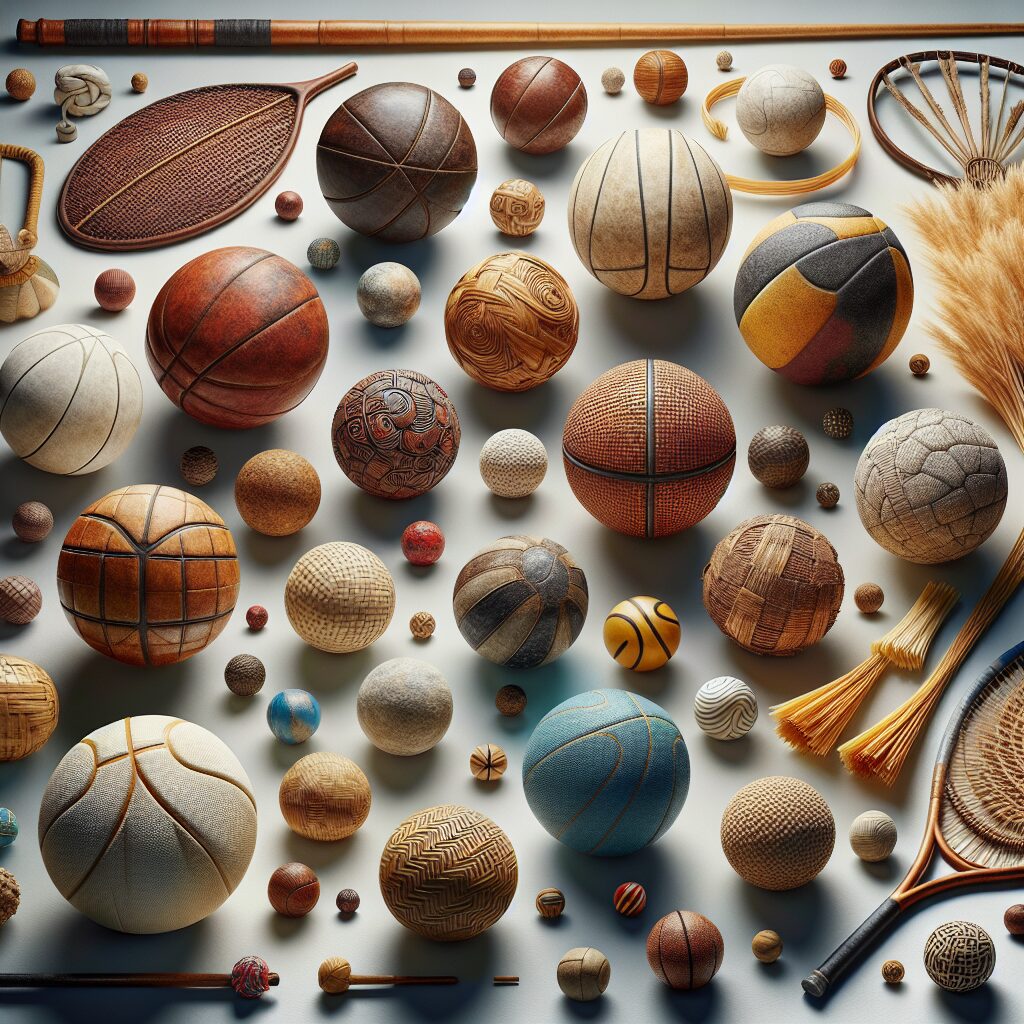Dogs love balls for a variety of reasons. From providing them with mental and physical stimulation to simply giving them something fun to play with, balls have become a beloved toy for all kinds of dogs. Whether it’s a bouncy tennis ball, a squeaky toy, or a bright and colorful ball, dogs seem to be drawn to these objects. So why do dogs love balls so much? Let’s take a look at the top reasons why your pup can’t get enough of this classic canine toy.Dogs love balls because they are fun to chase and fetch. Dogs like to play, and chasing and fetching a ball is an enjoyable game for them. Additionally, balls are easy for dogs to pick up with their mouths and carry around, which makes the game of fetch even more fun for them.
What’s So Special About Balls?
Balls are a versatile and fun way to get active and stay fit. Whether you’re playing a team sport, working out at the gym, or just playing around with your friends, balls can provide hours of entertainment. They come in all shapes and sizes, making them perfect for any activity. From basketballs for shooting hoops to softballs for throwing around with your friends, there’s something for everyone. Not only are they fun to use, but balls also provide a great workout that can help you stay in shape. With all the different kinds of balls available, it’s easy to find something that fits your needs and helps you get moving.
Balls also provide an excellent way to build strength and agility. Throwing a ball uses almost every major muscle group in the body, allowing you to work out multiple areas at once. This makes it easier to target specific muscles and increase overall strength and endurance. And because they’re so versatile, balls can be used for everything from running drills to core exercises.
Finally, balls are just plain fun! Whether you’re playing a game with your friends or just bouncing one around the room, they’re always good for some laughs and good times. They can also be used as a teaching tool for kids, helping them learn valuable skills like hand-eye coordination and teamwork. With so many uses and benefits, it’s no wonder why balls are such an integral part of exercise and playtime!
Playing With Balls Benefits Dogs
Playing with balls is a great way to provide exercise and mental stimulation for dogs. It helps them stay physically active and mentally engaged, which in turn can improve their overall health and wellbeing. Balls also provide an excellent source of entertainment for dogs, helping to keep them from getting bored or becoming destructive. Additionally, playing with balls can help strengthen the bond between a dog and its owner as they play together and share fun experiences.
Balls come in many different sizes, shapes, and textures, so there are plenty of options available to suit any dog’s preferences. Playing fetch is a popular game that involves throwing a ball for the dog to retrieve and bring back, while other games may involve hiding the ball or having the dog catch it in mid-air. A variety of toys can also be used in conjunction with balls such as tug of war ropes or frisbees.
Playing with balls offers many physical benefits for dogs such as improved coordination, balance, strength, agility, and stamina. It helps keep them fit by providing aerobic exercise that strengthens their muscles and helps burn off excess energy. Regular physical activity can also help reduce the risk of obesity-related health issues such as diabetes or joint problems.
Mental stimulation is another important benefit of playing with balls for dogs. Keeping their minds active helps prevent boredom which can lead to destructive behaviors like chewing furniture or digging holes. Working on tasks such as retrieving a ball helps stimulate a dog’s problem solving skills while playing games like hide-and-seek can improve their ability to recognize patterns and solve puzzles.
Overall playing with balls is a great way to provide exercise and mental stimulation for dogs that can help keep them healthy both physically and mentally. It also provides an excellent opportunity for bonding between owners and their pets through shared fun experiences that will last a lifetime!
How Do Dogs React to Playing With Balls?
Dogs absolutely love playing with balls and it’s a great way to keep them entertained and active. Most dogs love chasing after a ball and will often bring it back to you so they can do it again. Many breeds, such as retrievers, have been bred specifically to retrieve objects, so they have an extra special affinity for balls.
When a dog plays with a ball, they usually show signs of excitement and anticipation when the ball is thrown. They may bark or whine in anticipation and then take off running after it once it’s thrown. This kind of playful behavior can help bond the dog and its owner, as the owner gets to watch their pet have fun and get some exercise at the same time.
Playing fetch with a ball is also great for reinforcing good behaviors in dogs. Every time the dog brings back the ball, you can reward them with praise or treats which helps them understand that bringing back the ball is desirable behavior. It also gives them an opportunity to practice their obedience skills such as coming when called while having fun at the same time.
Playing with balls also helps dogs stay mentally stimulated which is important for their overall health and wellbeing. Dogs need mental stimulation just as much as physical exercise and playing fetch with a ball provides both of these benefits in one activity.
Overall, most dogs really enjoy playing with balls and it’s a great way to keep them entertained while providing them with physical exercise and mental stimulation at the same time.
Different Types of Balls Attract Different Reactions From Dogs
The type of ball that a dog is exposed to can have a huge impact on how the dog reacts to it. Different types of balls can cause different reactions from dogs depending on the size, shape, texture, and material of the ball. Smaller and softer balls, such as tennis balls and plush toys, are often favored by smaller breeds, as they offer more comfort and security. Larger breeds may prefer harder balls with a sturdier texture, such as rubber or plastic balls. Additionally, some dogs may prefer certain materials more than others – for example, some dogs may respond better to rubber or plastic balls than those made of cloth or other materials.
The shape of the ball can also affect how a dog reacts to it. Rounder balls tend to be easier for dogs to chase after and grab onto than other shapes. Additionally, some dogs may enjoy playing with oddly-shaped balls that are more challenging to grip – this could be an interesting way to engage them in playtime. The color of the ball can also have an effect – many dogs are drawn towards bright colors such as yellow and orange.
Finally, the size of the ball is important when considering how a dog will react to it. Smaller breeds are typically more comfortable with smaller sizes that they can easily carry around in their mouths without difficulty. Larger breeds usually prefer larger-sized balls that they can take for a run or play catch with their owners.
In conclusion, different types of balls attract different reactions from dogs depending on factors such as size, shape, texture, material and color. By taking these factors into consideration when choosing a ball for your pup you can ensure that your pup gets the most out of their playtime!

What Role Does Smell Play in a Dog’s Love for Balls?
Smell plays an important role in a dog’s love for balls. Dogs are equipped with an incredibly powerful sense of smell that they use to differentiate between different objects. This means that when a dog encounters a ball, they can use their sense of smell to recognize it as something unique and distinct from other objects.
This is why dogs often become so attached to their favorite balls. The smell of the ball is associated with positive emotions and memories, and it becomes something familiar and comforting to them. Dogs also have the ability to recognize the scent of another dog on a ball, which can be why some dogs become so possessive over their favorite toys.
The smell of a ball can also provide comfort and security for some dogs. A familiar scent can be reassuring and calming for a pup, which is why they love playing with their favorite toys so much. It provides them with something familiar that they can count on in any situation.
Finally, the smell of a ball can serve as an incentive for some dogs when playing fetch or other games involving balls. The scent of the ball serves as an invitation for them to go out and play, making it more likely that they will be interested in doing so.
In summary, smell plays an important role in a dog’s love for balls. It helps them recognize balls as something unique and distinct from other objects, providing comfort and security while also serving as an incentive for playtime activities like fetch.
Other Factors Prompting a Dog’s Attraction to Balls
Dogs are naturally drawn to balls, and many owners consider these toys a staple in their pup’s toy box. But what other factors make balls so appealing? Besides the obvious physical appeal of a round, bouncy object, other features may come into play when considering why dogs are so attracted to these toys.
One of the main reasons why dogs love balls is that they can be used as part of a game. Playing catch or fetch with a ball is an activity that many dogs enjoy and find stimulating. It gives them an opportunity to use their natural hunting and retrieving instincts while having fun at the same time. Additionally, playing with a ball can help strengthen the bond between dog and owner, as the activity requires cooperation between both parties.
Additionally, certain types of balls may have certain features that make them more attractive to dogs. For example, some balls have squeakers or crinkly paper inside that can grab a dog’s attention and encourage them to play with it. Noise-making toys can also be very appealing as they provide an additional source of stimulation for pups who may be easily bored by more traditional toys.
In addition to sound-making balls, certain textures may also attract dogs more than others. Balls made of soft materials such as plush or fabric may be more comfortable for pups who like to chew on their toys; alternatively, harder materials like rubber may be better suited for aggressive chewers who need something sturdier to keep their attention. Additionally, some materials may have scents embedded in them which can further entice dogs to play with them.
Finally, certain colours or patterns on balls can also be attractive to dogs and prompt them to engage with the toy more often than if it was just a plain colour. Brighter colours are often easier for pups to spot from afar and will draw their attention more quickly than duller tones; similarly, patterns or designs on the ball can add visual interest and make it stand out from other objects in its vicinity.
In conclusion, there are many factors that come into play when considering why dogs are so attracted to balls. From physical appeal and noise-making capabilities to texture and colour variations, each factor plays its own role in making these toys appealing for our canine friends. With this in mind, it is easy to understand why these simple objects remain such popular items among pet owners everywhere!
Potential Dangers of Letting a Dog Play With a Ball
Playing with a ball is one of the most popular activities for dogs. However, there are some potential dangers associated with allowing your dog to play with a ball. Balls can be dangerous if ingested, and they can also cause choking or other injury if your dog plays too roughly. Additionally, small balls can become lodged in the back of your dog’s throat, leading to coughing and gagging.
Balls are also a choking hazard for puppies and small dogs. Puppies have smaller throats than adult dogs, making them more prone to choking on balls and other small objects. If you have a puppy or small breed, it is best to avoid giving them balls or other small objects that they could accidentally swallow.
Another potential danger of letting your dog play with a ball is that the ball can become damaged over time. If the ball becomes punctured or torn, it could potentially pose a choking hazard or cause injury if ingested. It is best to inspect any balls regularly for signs of damage and replace them when needed.
Finally, playing with balls can sometimes lead to unwanted behaviors such as excessive barking or aggression if your dog becomes overly excited while playing with the ball. If your dog has any aggressive tendencies while playing with the ball, it may be best to discontinue use of the toy until these behaviors are corrected.
Overall, allowing your dog to play with a ball can be an excellent way for them to get exercise and mental stimulation. However, it is important to be aware of any potential dangers associated with letting your pup play with the toy so that you can ensure their safety at all times.

Conclusion
Dogs have been playing with balls since ancient times for many reasons. They find them to be an enjoyable source of physical and mental stimulation, and they also enjoy the challenge of trying to catch them. Balls represent a game of chase and reward, something that dogs love because it mimics their natural instinct to hunt. Dogs can also use them as comfort objects, as they are soft and can be held in their mouths.
No matter the reason, it’s clear that dogs love their balls! They may not always catch them, but they will continue to have fun trying. So don’t be surprised if you see your pup playing with a ball – it is natural for them to do so!
So why do dogs love balls? It could be due to their instinctive desire to chase and fetch, or because they provide physical and mental stimulation. Whatever the reason may be, one thing is certain: dogs will always find joy in playing with a ball!




